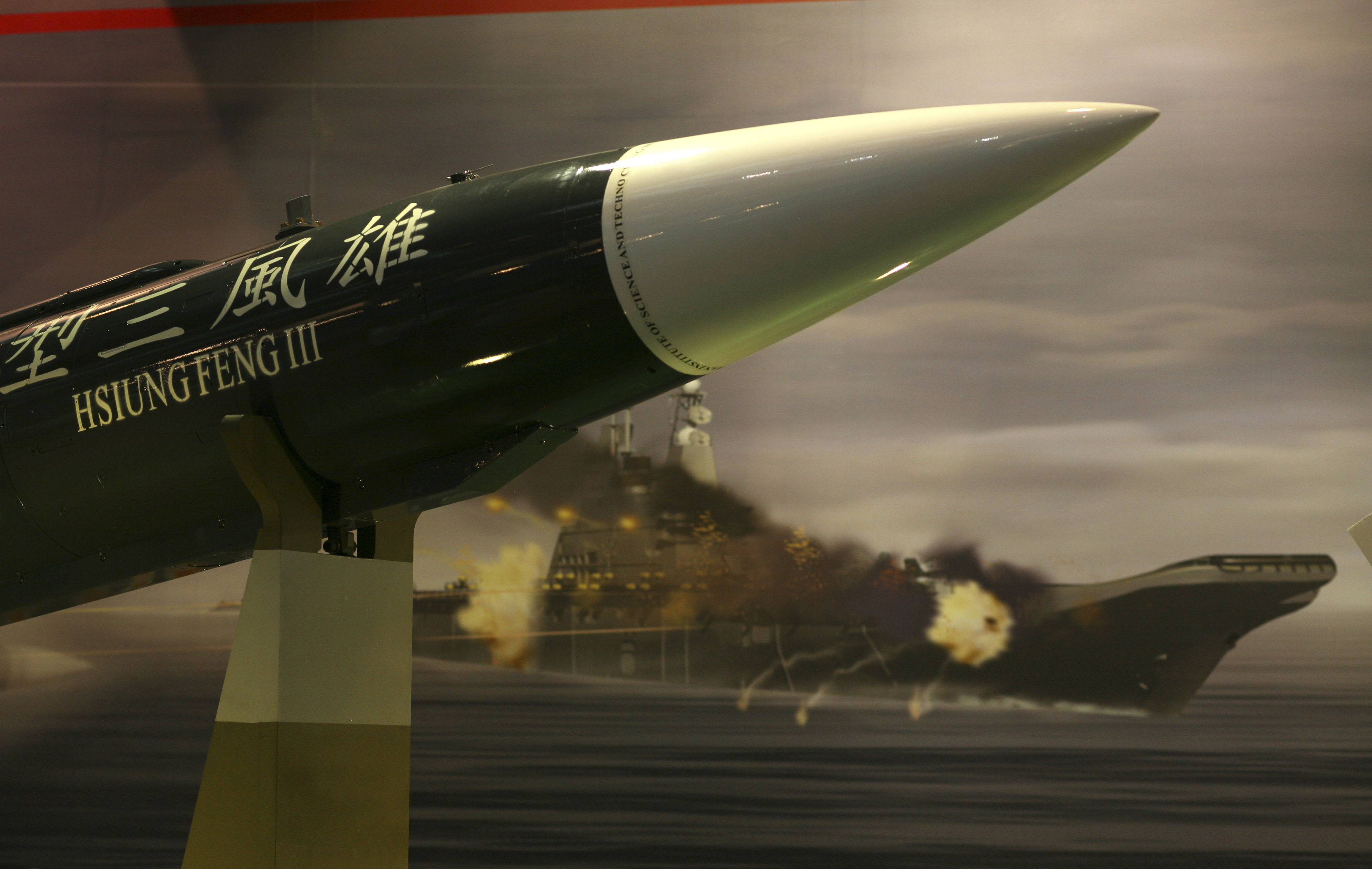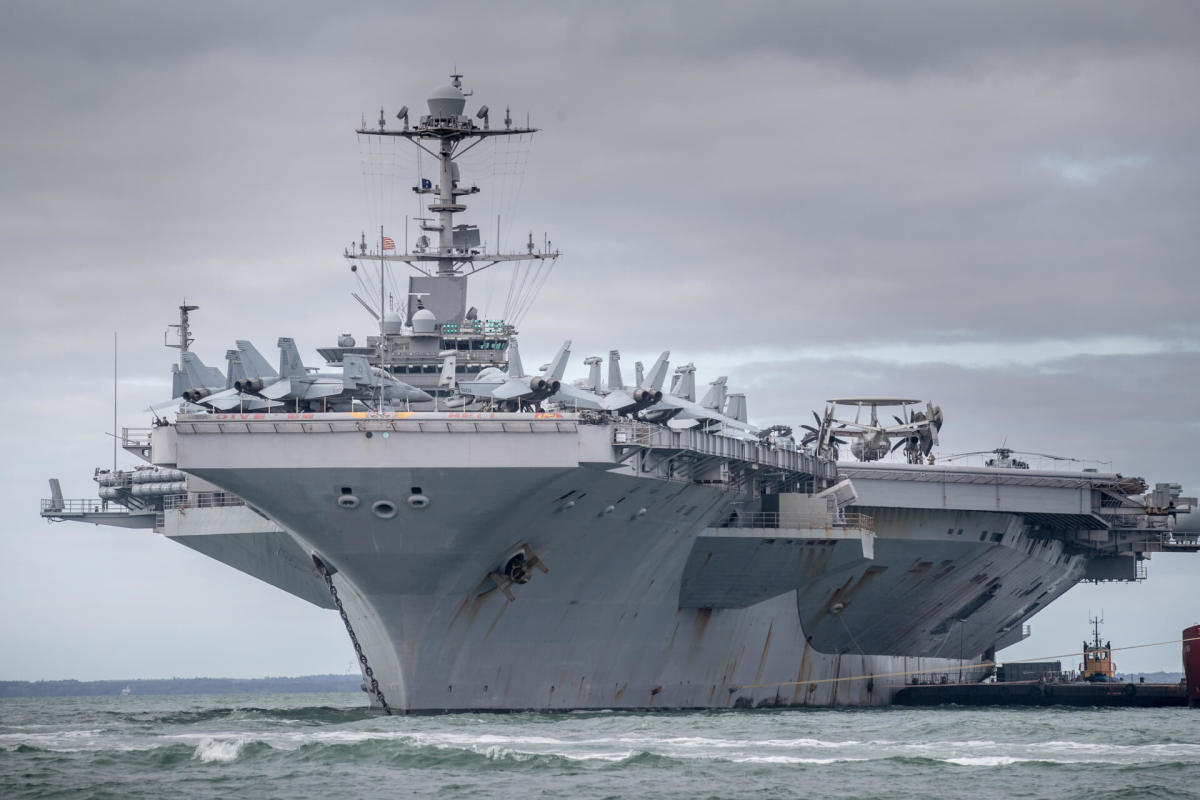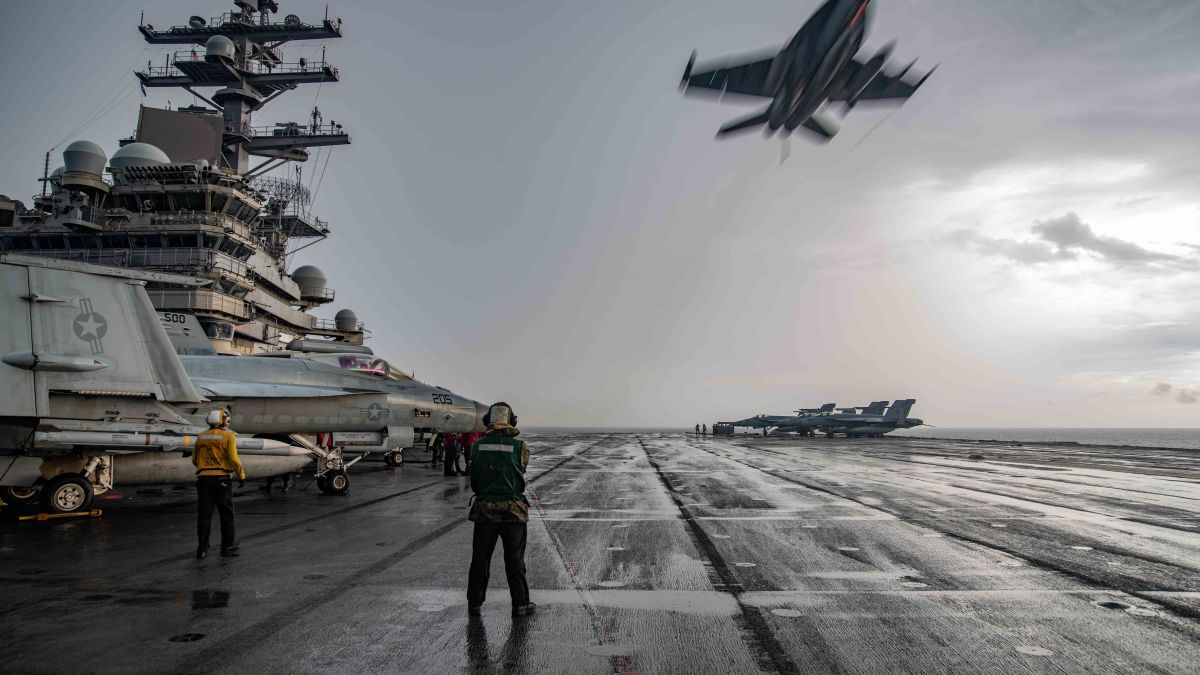Chinese Carrier Killer - Why China's 'ship-killer' missiles shouldn't threaten the US Read 3 minutes. Updated: 13.08.2021, 12:13 AM IST Posted by Saurabh Sharma Premium
In the disputed South China Sea, the US Navy announced a successful test run of its nuclear-powered aircraft, the Gerald R. Ford. That, military experts say, will send a message that America is not afraid of China's "carrier killer" missiles, which Beijing says can hit moving aircraft from 5,000 kilometers (3,100 miles) away.
Chinese Carrier Killer

On August 8, the US Navy announced that its aircraft carrier Gerald R. Ford had successfully conducted its third explosive test, the Full Ship Test (FSST). Shock tests confirm the ship's shock toughness and ability to sustain operations with live projectiles under simulated combat conditions.
Is The U.s. Navy Freaked Out Over China's Carrier Killer Missiles?
During the four-month test evolution, the aircraft carrier withstood the effects of a 40,000-pound (20-ton) underwater explosion that gradually moved closer to the ship.
"The Navy developed the Ford-class carrier using advanced computer modeling techniques, testing and analysis to ensure the ship's ability to withstand the rigors of combat," said Capt. Brian Metcalf, manager of the Navy's future aviation program office.
Metcalf continued, "the tests proved - and proved very convincingly to the crew - that the ship could withstand severe shocks and continue to operate in extreme conditions."
According to Song Zhongping, a former Chinese military instructor, another reason for Ford's successful announcement of the shock process, in addition to gathering information, is that the U.S. has a strong presence in China and Russia and is not worried about China. Typical of Russia. Anti-ship weapon”.
Report: China Test Fires 'carrier Killer' Missile In Disputed Sea
"The 40,000-pound explosive blast was much larger than the warhead of a conventional missile or torpedo...the test proved that the Ford-class aircraft could withstand some water mines or near-missile attacks, but did not lose their resistance to the test," Song told the Hong Kong-based South China Morning Post.
According to a military expert, ballistic missiles or hypersonic missiles can also carry electromagnetic pulse weapons that detonate at altitude and damage the aircraft carrier, or even take it out of combat.
China has two ballistic missiles - the (Dong-Feng) DF-21D and DF-26, also known as "Carrier Killers" - that can hit moving aircraft at a range of 5,000 kilometers. According to military officials, the DF-26 can launch precision nuclear or conventional strikes against land and sea targets.

Song's observations about China and Russia are not out of place, as America is building aircraft to travel to "the world's most contentious security environment," according to a top US Navy official.
Close In Defence For The Royal Navy's Aircraft Carriers
"We design and build these aircraft to operate in some of the most challenging security environments in the world. So when you think about the number of naval mines and warships hit by non-contact explosions around the world, the severity and consequences of these shock attempts really comes into focus," said Rear Adm. James P. Downey, program executive for Airmen.
Downey may not be clear, but the most contentious area in which the United States is currently involved is the South China Sea, where America is challenging Chinese sovereignty.
Service officials described the shock test — in which the Navy detonates a 40,000-pound shell in the water near the ship to test the ship and its systems — as a great success, with no major injuries, fires or flooding.
"There were zero catastrophic failures on the ship, zero flooding or anything, zero fires. That's all that matters," Ford's commanding officer, Capt. Paul Lanzilotta, told reporters.
Scenario: Us Navy Robots, Carriers And Mines Counterattack China
The USS Gerald R. Ford is the newest and most advanced aircraft carrier in the US Navy. The US Navy has conducted FSSTs for several decades, most recently aboard the USS Jackson and USS Milwaukee in 2016; for example, the San Antonio-class amphibious transport docked USS Mesa Verde in 2008, the amphibious assault ship USS Wasp in 1990, and the guided-missile cruiser USS Mobile Bay in 1987.
Get all business news, market news, news events and latest news on Live Mint. Download Mint News app to get daily market updates.
Oops! It looks like you have exceeded the image tagging limit. Remove some to brighten this image.

You are now subscribed to our newsletter. If you do not find an email from our site, please check your spam folder. In 1999, the United States engaged in an air and missile war with Serbia. As NATO bombs exploded around Belgrade - as part of a campaign to stop the ethnic cleansing of Kosovo Albanians by Serbian forces - several US missiles hit the Chinese embassy. It was the most controversial US action of the war.
Us Aircraft Carriers At Risk From Chinese Hypersonic Missile
Chinese leaders were furious, but could do little in response. The result? The bomber was a key moment in the decision to implement a complex weapon project: a ballistic missile capable of knocking down American aircraft carriers at a range of 1,500+ kilometers.
That's according to a new book by US Naval War College China military expert Andrew Erickson. The book has a great title: China's Anti-Ship Ballistic Missile (ASBM) Development: Drivers, Trajectories and Strategic Implications. But a full review of that weapon -- the DF-21D anti-ship ballistic missile -- may pose the greatest threat to American aircraft without a nuclear bomb.
"The end is that the era of 'ASBM denial' is over," Erickson writes. "China's ASBM is not science fiction. It is not 'smoke and mirrors.'
Usually, the carriers are very difficult to kill, sit far from the coast and most countries can drop into it. Escort ships patrol for submarines while anti-aircraft missiles and carrier aircraft scan for enemy bombers that can launch cruise missiles across the sea. But a ballistic missile capable of targeting ships can roll
Us Condemns China Drills After Reported 'carrier Killer' Missile Test In South China Sea — Radio Free Asia
There are still a lot of questions about how effective the DF-21D will be in real-world combat - it takes more than just a missile to hit a target with a missile. The missile is deployed by China's Second Artillery, which oversees Beijing's strategic missile arsenal. But how does Ericsson think China needs satellites to attack sensors and defeat electronic countermeasures put in the path of US missiles?
Little did US commanders know at the time of the embassy bombings, but it would lead to the worst arms race since the end of the Cold War.
In 1995, Chinese leaders were very concerned when the then Taiwan Press. Li Teng-Hui is preparing to go to the United States. The US granted Teng Hui a visa, prompting Beijing to conduct missile tests and naval exercises in the Taiwan Strait.

Carrier battle groups against China represent a force that China cannot resist. According to Chinese military technical papers compiled by Erickson, disarming the carriers accelerated Beijing's first steps toward ASBM.
China Parades New \
The Chinese navy was more than useless. Beijing "could not build a steel Great Wall at sea to keep the enemy outside the country's door, and could support land forces to protect the small twelve nautical mile territorial water line" China
This should be determined by chance. During Kosovo's war against Serbia in 1999, NATO mistakenly believed that a building in Belgrade housed the Yugoslav Federal Directorate for Supply and Procurement - itself believed to be involved in the procurement of military equipment. But accident or not, the Chinese embassy was bombed by US planes; three Chinese journalists were killed.
The Beijing generals were furious. But the generals were also worried. The US attacked China's interests, and China could not do anything about it. The embassy bombing was an accident, but could the US do it again, or somewhere else - and if it was targeted?
Unfortunately, the Chinese army was no different from the Serbian army at the time - technologically speaking. And the Serbian army was torn apart.
Expert: U.s. Would Lose A War With China Thanks To Thousands Of Missiles
"[The forces of the Federal Republic of Yugoslavia have always been able to passively attack and lack the strength to fight back, not only because [they] have no weapon systems, but especially because they do not have Assassin's Mace weapon systems," said Zhang Wannian, a prominent official of China's Central Military Commission in 1999. in his first speech.
According to Wannian and other Chinese leaders, including then-General Secretary Jiang Zemin, the solution is to maintain submarines, air defense radars and missiles, advanced fighter jets and multiple missiles to sink American warships, including developing anti-ship ballistics. Rockets.
"They were shocking to Chinese leaders at the time

Russian aircraft carrier killer, df-21d carrier-killer missile, aircraft carrier killer, china aircraft carrier killer, carrier-killer, chinese chalk roach killer, chinese roach killer powder, carrier killer, chinese ant killer chalk, chinese aircraft carrier killer, df 21d carrier killer, carrier killer missile
0 Comments